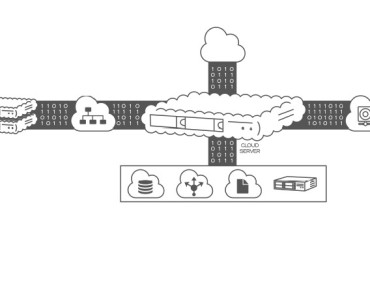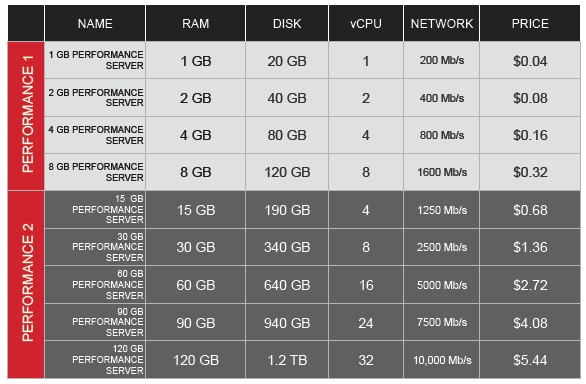Rackspace Jacks Up Memory, Adds SSDs on Public Cloud

If you want to charge a premium price for a product, you have to offer a premium service. Rather than get into a price war with Amazon Web Services, Rackspace Hosting has contended that it offers better tech support to justify its higher prices. Now, Rackspace is cranking up the performance on its Cloud Servers infrastructure cloud to further justify that premium.
The performance boost is coming through the addition of heftier underlying physical servers for Cloud Servers. The new machines have a lot more main memory and also use solid state drives for local storage instead of disk drives. The network pipes going into the machines are also fatter, and there are ports dedicated to storage that are separate for links that go out to the Internet or hook into other servers on the Rackspace cloud.
Scott Sanchez, director of strategy at Rackspace, tells EnterpriseTech that the beefier server configurations are being driven by customer demand. "It is hard for customers to figure out how they can get predictable performance on the cloud," he says, and they are often torn between having absolutely predictable performance on a dedicated server environment that does not have compute that can scale up and down as well as elasticity in pricing. On the other end, if they want that on-demand capacity, they often have to deal with either mediocre performance or unpredictable performance because of the noisy neighbor problem that affects all virtualized servers.
The new Performance Cloud Servers configurations are basically throwing enough silicon at the problem to make performance on the public cloud less of an issue. The underlying servers are not based on the Open Compute-derived machines from Quanta Computer and WyWinn that Rackspace was showing off earlier this year. These are still being put through the paces in the labs. Says Sanchez, as are machines based on Intel's latest "Ivy Bridge-EP" Xeon E5-2600 v2 processors. The nitro-guzzling Cloud Servers use the first-generation "Sandy Bridge-EP" Xeon E5 processors. The machines are sourced from an unnamed vendor, and a gambler would put money on it being Dell, Hewlett-Packard, or Supermicro.
The new Cloud Server instances can be configured with up to 120 GB of virtual memory, which is four times the memory of the prior virtual server slices on the Rackspace cloud. Customers can have up to 32 virtual CPUs configured on a slice, which is twice as much as before.
The servers are using solid state drives that are sourced from multiple vendors, and Sanchez says that these are "datacenter-grade" units, not consumer drives slapped into servers. Sanchez says that Rackspace looked at PCI-Express flash cards as a possible option, but it wanted drives that were hot-swappable to aid in speedy replacement. The SSDs are configured in a RAID 10 setup, which stripes data across multiple units to boost performance as well as mirroring two groups of units for high availability. In the prior generation of cloud servers, the disk drives used in the servers could deliver somewhere between several hundred to low thousands of I/O operations per second in a fairly large instance. The large instances of the new Performance Cloud Servers can deliver 80,000 IOPS on reads and 70,000 IOPS on writes, something on the order of a factor of 132X on average compared to disk-based servers.
As for networking, each server is set up with four 10 Gb/sec Ethernet ports, based on Intel network interface controllers. Two of these are dedicated to reaching out to storage and the other two are used for east-west traffic between servers or reaching out north-south to the Internet and back. Rackspace is using Nexus 3000 switches from Cisco Systems at the top of rack. But don't get the wrong idea. Rackspace is not necessarily a Cisco shop, the deal just went its way this time around in the procurement.
The redundant links mean that the bandwidth can be ganged up going into and out of the server and in the event one link fails, there is still another one that is live until the machine can be fixed. The network bandwidth delivered in a large instance of the Performance Cloud Server is 8.3 times that of the prior large instance of a standard Cloud Server.
Add it all up, and customers should expect somewhere around 2.5 times the performance. Or a little better. Commissions Inc, an online marketing firm that runs on the Rackspace Cloud and was a beta tester for the new server slices, was able to do around 400 transactions per second on a standard instance of Cloud Servers, and the same code was able to crank through 3,500 transactions per second on a performance slice.
Here are the configurations for the new cloud server instances:
As you can see, there are two classes of upgraded server instances. The Performance 1 instances are aimed at workhorse workloads like Web serving, batch processing, small databases, and computational workloads where sharing the server and network with others is going to be less of an issue. The Performance 2 setups have higher I/O performance plus dedicated CPU cores and network capacity. They are aimed at NoSQL data stores such as Cassandra and MongoDB as well as relational databases and similar beefy workloads where performance consistency is as important as raw performance.
"For these two classes of workloads, we believe that disk is dead," says Sanchez. EnterpriseTech is inclined to agree.
In some cases, the new zippy server slices are more expensive than the current standard versions, but in most cases, the higher-performance instances are less expensive.
The new server slices can reach out to Cloud Block Storage, which comes in disk and SSD flavors, and the performance here has been goosed as well, up by a factor of 1.5X for disk-based and 2.5X for SSD-based block storage.
For now, the Standard, Performance 1, and Performance 2 instances will all be available on the Rackspace Cloud, but over time, Rackspace will retire the Standard instances. The high-performance server slices will debut in Rackspace's Northern Virginia datacenter this week and will be rolled out in its Chicago, Dallas, and London datacenters later in November. The datacenters in Hong Kong and Sydney will get them during the first half of 2014.











